- Administrator
- Albums and Singles
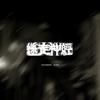 It seems that there has been a recent surge of interest in experimental music coming out of the People’s Republic of China in recent months, perhaps culminating in the recent Sub Rosa compilation that John Kealy expertly covered here on Brainwashed. Now, the diffusion is taking place, and artists like Li Jianhong (one half of VagusNerve) and Torturing Nurse are making strides into the global experimental and noise scenes. The venerable Utech label is mining this fertile ground with the new Shokyo Ontei series of albums, which begins here.
It seems that there has been a recent surge of interest in experimental music coming out of the People’s Republic of China in recent months, perhaps culminating in the recent Sub Rosa compilation that John Kealy expertly covered here on Brainwashed. Now, the diffusion is taking place, and artists like Li Jianhong (one half of VagusNerve) and Torturing Nurse are making strides into the global experimental and noise scenes. The venerable Utech label is mining this fertile ground with the new Shokyo Ontei series of albums, which begins here.
VagusNerve is the collaboration between avant guitarist Li Jianhong and laptop musician Vavabond, who together weave dense, multifaceted textures of sound which, for all their layers never completely obscure either artists’ contributions. For a label that has so expertly cornered the dark drone market, here the sound is much lighter and diverse, thus coming as quite a surprise.
The eight minute introductory piece "In the Summer of 2006, Li Made a Dream About a LoPan and a UFO" begins with force: an immediate surge of grinding laptop noise and traces of gentle, buried guitar. The track remains a complex, extremely diverse recording throughout, with dense layers of serpentine sound constantly slithering. It is only towards the end that the track begins to wind down and separate into a more rudimentary mix.
The second track, "Vavabond Felt Some Magical Power Hiding Between the Symbols, Numbers, and Text on the LoPan" errs more on the side of aggressive sound, with the guitar playing being obscured by hollow reverbs, electronic pulses and other digital elements. While the guitar initially is just as dissonant of an element, sounding mostly like siren squeals, the track eventually evolves into more “conventional” territory. The latter third of the piece especially demonstrates more traditional guitar sounds and less abstract laptop elements, to weave an extremely mutated form of post-rock that has a familiar feel, but sounds like nothing else.
The final (and longest) piece, "No Doubt, the LoPan is a Universe" mixes multiple elements into a single, near half hour track. The opening of fuzzy guitar drones and digital static are not an especially unique sound, but they transition into a heavy form of ambience that mixes conventional guitar and untraditional electronics together. The center segment amplifies the digital noise far more than anywhere else, pushing the track into laptop squeal along the lines of John Wiese or other practitioners. Then, the guitar enters the fray once again, creating a brand of ambient guitar rock that, when combined with the laptop sounds, comes across like a song just a bit off on the radio dial, and no fidgeting with the knob will get it to lock into place. The gentle ending to the album is one of the few overt moments of breathing room here.
The most remarkable aspect of LoPan is how adeptly it blends sounds that are on their own rather harsh and dissonant, and yet the two artists mold and shape them into something far greater than the sum of its parts, and into a sound that feels somehow inviting and familiar, yet completely alien. Rarely is there something that could be truly described as "ethereal noise," but this is a prime example.
samples:
- Li Made a Dream About a LoPan and a UFO
- Vavabond Felt Some Magical Power Hiding Between the Symbols, Numbers, and Text on the LoPan
- No Doubt, the LoPan is a Universe
Read More
- Administrator
- Albums and Singles
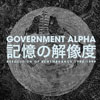 Lasse Marhaug’s Pica Disk label is shaping up to be a powerful force in the world of noise. In the spirit of this year’s sprawling Incapacitants Box is Stupid collection, here the work of Yasutoshi Yoshida is compiled from rare tapes and CDRs, along with a nice smattering of previously unreleased tracks. It is a chance to hear the development of one of the modern titans of Japanese noise.
Lasse Marhaug’s Pica Disk label is shaping up to be a powerful force in the world of noise. In the spirit of this year’s sprawling Incapacitants Box is Stupid collection, here the work of Yasutoshi Yoshida is compiled from rare tapes and CDRs, along with a nice smattering of previously unreleased tracks. It is a chance to hear the development of one of the modern titans of Japanese noise.
While perspectives may differ, I considered Government Alpha as being one of the first "traditional" Japanese noise artists that was influenced by existing bands of the genre. I always considered the likes of Merzbow, Hijokaidan, and the Incapacitants as the "classics," and GA, along with contemporaries like Pain Jerk, being directly influenced by the older artists, without being contributors to the genesis of the sound. In this regard, the different projects went off in their own directions, capturing the essence of "Japanoise" but taking their own specific approach. Yoshida’s work has always been one of hyper-kinetic energy, diametrically opposed to the frozen, massive clouds of noise the Incapacitants or Hijokaidan specialize in.
Each of the four discs of this set are thematically and chronologically separated. The first, Quickening, is perhaps the most diverse and obtuse of all included. Consisting mostly of unreleased early material and self-released tape tracks, here is the artist finding his voice. While there are somewhat one dimensional harsh noise tracks, like "Bruise" and "Thing Origin," there are more experimental moments, like the treated guitar and pitch wobbling "Funeral March" and the jagged house techno synth line that underlies the feedback and junk metal noise of "Mixed Parentage." "Artificial Fertilization" and "Crystalization" are heavily loop-based and come across like a more stripped down, mellow Pain Jerk. Other tracks sound more in league with musique concret and modern improvisation, like the long "Burial Ground" mixing abstract ringing metal textures and other incidental noises with passages of pure noise holocaust.
Sprout, the second disc, marks the period in which Government Alpha became more prolific and ended up gaining more notoriety in the scene. It is here that the sound takes on the dynamic noise quality that Yoshida is known for. Opening with the brutal "Liquefaction," which seems mastered louder than the tracks that follow, there is the immediate bombardment of overdriven low frequency static and shrill sine pulses and feedback. While many who are not acolytes of the genre proclaim that all noise is the same, this is the kind of material that renders their argument null. Even a casual listen reveals a multitude of different layers, tones, sounds, frequencies, textures, etc, that are intermingling throughout. While far more improvisational in their approach, the aforementioned track, and others on here such as "Abortion" and "Insomnia" structurally feel more in league with the best of free jazz, using electronics rather than horns and traditional instruments to generate the sound. A few oddities stick out among the chaos, like the more restrained cut-up piece, "Irregular Behavior," and the almost rhythmic framework under "Electrocardiogram." A few others, like "Siesta" feel a bit too rudimentary to be as enjoyable, but those moments are few and far between.
Disc three, Chaos, is a further refinement of Government Alpha’s harsh noise. Here a "style" begins to emerge, one that layers lower frequency static crunches with higher pitched feedback "solos" that come across as an enjoyable perversion of conventional music. "Quoit" and "Quickening" follow this formula, but mix more mechanical crunching noises, like a factory near meltdown, in the other structures. "Vaporizer Pt. 1" steps outward a bit more and adds slowly flanging tones and '70s sci-fi echoes to tinge the sound with just a bit of psychedelia. "Death and Afterimage" displays some semblance of a rhythm, mostly in the form of repeated panning crashes, that painfully shrill squeals appear over.
Diffusion, the final disc, lives up to its title, with the now established Government Alpha "sound" absorbing new and different elements, while still retaining its characteristic action. "Setting Sun" and "Sidewinder Part 2" continue the meld of low and high frequencies, but with a more prominent low end that gives a physical impact. "Thrombosis" demonstrates what sounds more like a basic synth sequence to drive the proceedings, putting an almost industrial sheen on otherwise raw noise. "Stormy Sunday Morning" is lead by what almost sounds like a horribly neglected and processed church organ solo throughout, and "Shine 1" features actual undeniable bass drum rhythms at points throughout. There is a greater diversity to the sound here, but the tracks never sound like anyone else.
Again, credit is due to Lasse Marhaug for his wonderful presentation of the material. Not only is the audio crystal clear and sharp as humanly imaginable, the discs come in a luxurious, foil printed clamshell box (like the Incapacitants box from earlier), while each individual disc is packaged in a glossy sleeve adorned with full color Dada-ist collages from Yoshida, which are also featured in the accompanying booklet, along with liner notes from both him and Tommy Carlsson, in addition to pictures of the original cassette and CDR covers. This is a beautifully presented collection which not only emphasizes Government Alpha’s contribution to the noise scene but also further establishes Pica Disk as one of the pre-eminent noise labels active right now. Lasse, you think it might be time to revisit some old school Pain Jerk?
samples:
Read More
- Administrator
- Albums and Singles
 In 1973, Gary Higgins and his friends recorded Red Hash, an album that (completely unbeknownst to him) gradually became hailed as a lost psych-folk classic. More than three decades later, he returned to the studio to record this follow-up. The result is most definitely not another minor masterpiece, but it certainly is strange and memorable nonetheless (though often not for the right reasons).
In 1973, Gary Higgins and his friends recorded Red Hash, an album that (completely unbeknownst to him) gradually became hailed as a lost psych-folk classic. More than three decades later, he returned to the studio to record this follow-up. The result is most definitely not another minor masterpiece, but it certainly is strange and memorable nonetheless (though often not for the right reasons).
There are two fundamental flaws that immediately and irrevocably sabotage Seconds. The first is a distinct lack of stylistic focus. A plausible explanation is that this album is culled from a haphazard retrospective of material that Gary has written over a span of decades, but that doesn’t make it any less jarring for his heart-on-my-sleeve folk rock to coexist with the Santana-isms of “Don’t Wanna Lose” or the bad-acid-meets-Disney-soundtrack keyboard atmospherics of “Squirrel.” The second, and infinitely more damning, problem is that Gary’s lyrics can be singularly bad. The most uncomfortable moment for me is probably when he strains at the upper limit of his vocal range to convey the words “she came to me on a ten-speed, she came to me on a centipede” with painful earnestness. However, the entire album is a veritable minefield of clumsy rhyming couplets, regrettable poetic flourishes, and awkward bluntness (“puke in the trunk of your car”). The lyrics to “Squirrel” are in an unfortunate category all their own, but I will give it a pass because it hopefully was intended as a children's song (the clumsily and unfortunate psychedelic studio effects remain unpardonable though).
Notably, however, Gary begins “Mister Blew” with the spoken declaration “now there’s just one thing I want everybody to know: it just doesn’t fucking matter” and he makes a good point. The Gary Higgins that made Seconds is a completely different person than the fellow that recorded Red Hash: there is no attempt here to make “art.” Instead, Higgins seems quite content with the fact that he is simply playing music again. Despite its many shortcomings, Seconds shows Gary is still a pretty good guitarist and a rather charismatic and likeable singer. While he never comes close to approaching his past work, genuinely good songs like “3am Trilogy” show serious potential for a creative resurrection. Higgins can be quite endearing when he writes straightforward songs about his own life and his enthusiasm is often difficult to resist. However, I would be remiss if I did not state that I am mystified as to why he dragged his best song out to 13 minutes or how the same person that wrote the words “unassisted moral suicide” could also write “why was the little squirrel so dumb?”
The tragic irony here is that Seconds is actually a much more unique and “outsider” album than Red Hash. Gary Higgins certainly wasn’t the only guy making freaky folk music in the early ‘70s: he was part of a larger counter-cultural zeitgeist. This album, however, is the work of a man who has seemingly stepped out of time and is completely disinterested in the culture around him. While an undeniable failure, it is quite an interesting one. In fact, Gary’s embrace of hopelessly dated synth sounds is perversely charming and actually made me like him more. I guess he just needs some more time to shake off the rust.
samples:
Read More
- Administrator
- Albums and Singles
 Without doubt, this is the best rendition of Erik Satie’s marathon piano piece to surface. Performed last year in Brussels by Stephane Ginsburgh on Satie’s own piano, this is beautifully recorded extract from the mammoth work is breathtaking. Listening to this in the still of the night is anything but vexating. The calm, contemplative music brings about feelings of bliss and by the end of the recording it is difficult to be annoyed about anything.
Without doubt, this is the best rendition of Erik Satie’s marathon piano piece to surface. Performed last year in Brussels by Stephane Ginsburgh on Satie’s own piano, this is beautifully recorded extract from the mammoth work is breathtaking. Listening to this in the still of the night is anything but vexating. The calm, contemplative music brings about feelings of bliss and by the end of the recording it is difficult to be annoyed about anything.
Satie’s Vexations was overlooked for many years as a joke; one musical motif played 840 times with no variation. It was only in 1963, 70 years after it was written, that John Cage organised an 18 hour 40 minute rendition of the piece. The seeming impossibility of any one man performing the whole piece was solved by having 11 pianists take it in turns to play a number of repetitions each. This recording of Vexations, as the title suggests, sees Ginsburgh perform 42 variations of the piece. His performance is clear and deliberate, obviously taking into account Satie’s sole direction as to how to play the piece: “In order to play this motif 840 times consecutively to oneself, it will be useful to prepare oneself beforehand, and in utter silence, by grave immobilities.” This could be directed at the listener too; in order to hear the piece as intended, the CD needs to be repeated 20 times (not 12 as indicated in the sleeve notes) which is over 23 hours of intense repetition (I have not tried this yet...).
Compared to Alan Marks’ recording of Vexations, this recording is superior in terms of sound quality and in performance. Ginsburgh seems less hurried and lets each note sing out with all its splendour. As I stated in my review of Marks’ performance, it is difficult to expect what will come next within each repetition of the motif as Satie made Vexations into quite a complex and unpredictable piece of music, an amazing feat considering the huge amounts of repetition required.
Also included with the CD is a comprehensive essay by Matthew Shlomowitz on the relationship between the works of Satie and those of Cage, detailing how without Cage’s interest in the piece it would have remained unknown and unappreciated. As it is an extract from a larger thesis, it is quite academic in tone but it is still a fascinating read to the layman. Overall, this is the definitive production of Satie’s Vexations until someone actually puts out the whole thing in one recording.
sample:
- Vexations (3 minute extract)
Read More
- John Kealy
- Albums and Singles
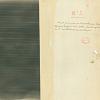 Last year, the earliest known recording of the human voice was discovered to have been made in France in the mid-19th century. This limited edition is beautifully packaged but seems superfluous; the brief recording is not exactly catchy and is available easily across the net as it is. I can only assume that there are more recordings made in the same way and it would make more sense to package them up together. Yet evidently only this one recording is interesting enough to be singled out for release.
Last year, the earliest known recording of the human voice was discovered to have been made in France in the mid-19th century. This limited edition is beautifully packaged but seems superfluous; the brief recording is not exactly catchy and is available easily across the net as it is. I can only assume that there are more recordings made in the same way and it would make more sense to package them up together. Yet evidently only this one recording is interesting enough to be singled out for release.
In 2008, many news sources carried the story of a recording made in 1860 of a woman singing the traditional song “Au Clair de la Lune.” The scratchy and frankly unearthly sounding recording was barely recognisable and later it was found that the recording had been digitised at the wrong speed; it was a man singing and not a woman. That man was Édouard-Léon Scott de Martinville, the inventor of the phonoautogram. This obscure recording device predates Thomas Edison’s phonograph by 17 years but instead of recording by putting indentations onto foil (Edison’s method), the phonoautogram recorded onto paper using soot from a smoking lamp. Scott de Martinville’s efforts lay buried in the archives of the Institute of France’s Academy of Sciences until last year when special software was designed to read the recording.
This 7” contains the full recording but that is not saying much. The 20 or so seconds that the recording lasts is anticlimactic; without knowing what it is I was listening to, this is only a piece of sonic debris. Even taking into account the importance of the piece, I do not feel that pressing Scott de Martinville’s recording onto a piece of vinyl is particularly fitting. The irony of releasing “Au Clair de la Lune” on the technology Edison invented seems to be lost on Parlortone. That said, the 7” format has allowed for some nice reproductions of the original notes and recordings on the sleeve and the historical account included here is far better than any of the articles published in the mainstream media. However, this is at the end of the day a scientific curio rather than a piece of art made to be enjoyed so needless to say the replay value is minimal.
Read More
- Administrator
- Albums and Singles
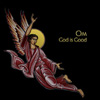 Om's first studio album with Grails' Emil Amos on the drum throne contains some of the most confident, ambitious, unexpected, and brilliant work in the bands' history. Exasperatingly, however, there is not very much of it.
Om's first studio album with Grails' Emil Amos on the drum throne contains some of the most confident, ambitious, unexpected, and brilliant work in the bands' history. Exasperatingly, however, there is not very much of it.
The first indication that Al Cisneros has been seriously working towards expanding Om’s sound comes instantly, as God is Good opens with the sound of a sitar. Given the band’s conspicuous historical avoidance of anything other than the core bass and drums, this is a rather surprising sound to hear. However, the cavalcade of unexpected developments continues unabated throughout “Thebes,” as the sitar is soon joined by piano, double-bass, and tabla. My initial gut reaction was dismay, as Indian instrumentation is such an obvious and hackneyed signifier that rock bands have employed for years to make it clear that their music is “mind-expanding” or “spiritual”. However, I quickly forgot that, as “Thebes” unfolds into one of the best songs that Om has ever recorded.
At over 19 minutes, this massive opus takes up more than half the album, but displays such a masterful command of dynamics that it never starts to drag. Cisneros' bass playing continues to reach new levels of quiet virtuosity, alternating between clean, melodic passages and crushingly heavy, throbbing grooves. During the rare times he stomps his distortion pedal, he plays riffs that constantly shift and evolve to such a degree that they are no longer really riffs anymore: just the right notes intuitively played at the right time. His somnambulantly chanted vocals are equally striking, as he wrings an impressive degree of menace from words like “minaret” and “avatar.” Notably (and much like Jorge Luis Borges), Al wields language with such erudition and skill that his lyrics often border on impenetrable (“Ablutes the sequence house of being-sheaths”). Fortunately, they still sound very convincing when he sings them. Most importantly, Emil Amos makes it quite clear that Chris Hakius's departure was not a mortal wound for the band. While Amos' drumming is certainly less aggressive and improvisatory than that of his predecessor, his relaxed and spacious playing complements Om’s newly heightened clarity and melodicism quite beautifully.
The second song, “Meditation is the Practice of Death,” shows similar promise, as Al and Emil immediately lock into a laid-back and hypnotic groove. Amos is particularly amazing, as his slow-motion ride cymbal beat and inspired fills completely obscure the fact that the whole song is essentially a one-riff vamp. The trend of startling and unusual elements is continued, but the divergences here are lamentably not quite as successful. The notable exception is the inspired dub-influenced studio tweaking of Amos’s fills into echoing rumbles. However, there is also some fairly inconsequential guitar(!) and a lengthy flute outro that proves to be the song’s downfall. Actually, the flute solo is quite welcome and enjoyable at first, but it goes on for entirely too long and ends the song in a frustratingly anti-climactic fashion. It seems like Cisneros was at loss as to how to finish the song and just shrugged and stopped when he ran out of lyrics. The raw material for a truly killer track is amply evident, but feels like it was prematurely rushed to completion.
The flaws of “Meditation” are maddeningly exacerbated by the fact that it is essentially the last “real” song on this four-track album, as the second half consists solely of two faux-Middle Eastern instrumentals. The two segments of “Cremation Ghat” certainly have flashes of excellence (particularly the fluid, melodic bass playing in the second part), but they are also a bit one-dimensional and bombastic and certainly do not play to the band’s strengths. They seem to occupy a stylistic no man’s land between Tortoise and Muslimgauze that I suspect few are eager to see filled. While I am pleased that Om are aggressively pushing their sound into expanded realms, these experiments are not compelling enough to fit on the same album as what came before them and would have been better left unreleased or issued as bonus tracks.
That said, I still cannot stop listening to this album (though I usually start it over again when the flute solo comes in). Notably, God is Good was produced by Steve Albini, yet it is perversely the least raw album Om has ever made. It is a stunning sounding release anyway, as literally every nuance of Emil’s drumming is audible. Some listeners may miss the churning intensity of Om’s previous work, but I don’t perceive any substantial decrease in power: the focus has merely shifted from artificial strength created by volume and overloaded signals to the much more human force of Al’s portentous, shamanic vocals.
samples:
Read More
- Administrator
- Albums and Singles
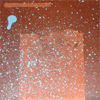 Christopher Riggs can't keep still, but it is to our benefit that the seemingly ADD-riddled guitarist produces output that makes even the most ambitious musicians and labels blush. Riggs returns with Gold Danny, another venture into perverted guitar noise from the current Michigan resident and former Oberlin Conservatory student.
Christopher Riggs can't keep still, but it is to our benefit that the seemingly ADD-riddled guitarist produces output that makes even the most ambitious musicians and labels blush. Riggs returns with Gold Danny, another venture into perverted guitar noise from the current Michigan resident and former Oberlin Conservatory student.Don’t be fooled by Riggs’ collegiate pedigree—he is quick to veer far away from the traditional academic philosophy of creating complication compositions for art and beauty. Of course, there is the other side to the equation; music as a form of guttural art in the hands of musical geniuses with sheepskin degrees. Riggs roughly combines the opposite ends of the spectrum, producing a mountain of original output through his Holy Cheever Church label (which has found nine releases bearing his name this year; some of it distorted and awkward, some beautifully avant.
Gold Danny happens to be the first CD-R Riggs has released of his material this year, choosing to use the lo-fi sounds of cassette to house his creations. The slightly clearer sound emitted from the spinning disc puts a clearer spotlight on Riggs’ many talents. Gold Danny spans a host of electric guitar manipulations, rapidly changing from elastic string bends to monotonous bows. It’s the anonymity of Gold Danny, however, that is easiest to embrace. The 17 nameless tracks—rotating between 3-minute bursts of 6-string fury and 25 second silences—come across as ideas Riggs is sharing with listeners, as if to seek active feedback from his work. Despite being the product of spastic fits of creativity, Riggs has always worked well with others (as evident by his collaborations with Matt Endahl, Terrortank, and Mike Khoury among others) but this time we’re in the role of co-conspirator. Much like the Buddha box, Gold Danny feels like a tool to stir the creative juices of its audience and an eventual means to become part of a musical Frankenstein.
Christopher Riggs explores melody in abstract tones, often replacing any semblance of pattern for warped plucks and pounds of guitar strings. Much of Gold Danny plays like the plops and clicks from the “Seinfeld” theme, though the cute midi effects are replaced with twisted metal and chromatic springs. Each piece is a mini-deconstruction of the guitar in the truest form—as if Riggs has grown bored with a fully functioning instrument and is determined to pry open its electronic guts and document the process with the guitar’s death cries. Yet the intentions aren’t evil, and it translates into Riggs’ playful recordings.
Gold Danny may not be a conventional guitar album, but rarely does Christopher Riggs exist within convention. In the end, the guitar is just a prop and the treatment of it as such provides a new take on the instrument. This may not be a new way to coax strangeness from a guitar, but few can do it with this amount of effortless whimsy and cartoonish charm.
samples:
Read More
- Administrator
- Albums and Singles
 A big deal has been made in the underground music press about China’s new music. Comparisons with other geographically unified music scenes like New York’s No Wave movement echo throughout the web but as Sub Rosa’s recent overview of Chinese music has shown, the idea of a single scene (or even a geographical localisation of protagonists) is a false notion. This duo from Beijing sound nothing like any of their contemporaries and they sound little like their admitted influences. White impressed me greatly last year when I saw them live in London and now that their debut album is finally available, they have floored me yet again.
A big deal has been made in the underground music press about China’s new music. Comparisons with other geographically unified music scenes like New York’s No Wave movement echo throughout the web but as Sub Rosa’s recent overview of Chinese music has shown, the idea of a single scene (or even a geographical localisation of protagonists) is a false notion. This duo from Beijing sound nothing like any of their contemporaries and they sound little like their admitted influences. White impressed me greatly last year when I saw them live in London and now that their debut album is finally available, they have floored me yet again.
While there are echoes of Throbbing Gristle or Swans at various points throughout their album, White move beyond any ground previously explored by those groups. Even Einstürzende Neubauten, the band who have nurtured White (Blixa Bargeld produced the album and it has been released via a label that has been born out of Neubauten’s supporter project) are only given passing nods from time to time (although there is a homage to their early clamour during “Roswitha Strunk”). These bands are influences in methodology only; Shenggy and Shou Wang have forged a distinctive, modern sound from post punk principles.
White’s music has a positive, optimistic quality to it that is infectious. Throughout the album I get a feeling of serenity and happiness that should not be from a band touted as China’s answer to industrial music. The strange slide guitar (if it is even that, it is a mysterious sound) in “Spring House” creates an off-kilter feeling of hope as Shenggy gently sings over it. Once the music takes flight, Shenggy and Shou Wang have the grace of birds. The effect is beautiful and unusual yet not as delicate as this written description would suggest. White create sturdy music that is also lightweight, the notes and beats made from a musical form of aluminium.
The standout track on the album is “Build A Link,” where the brightness of White’s outlook on life shines brightest. The rhythm and evolution of the song is reminiscent of Kraftwerk’s “Neon Lights” and like Kraftwerk, White romanticise the mundane features of modern life that define how we now live. The lyrics here encapsulate the feeling of joy at realising how technology is no longer a depersonalising entity but a new way of forging links between the various cultural islands of humanity. “47 Rockets (For Wan Hu)” explores this sort of technophilia but with a bit more oomph to the music; a joyous climax towards the end of the song like fireworks in the night sky.
Finally, the studio process has worked very well in White’s favor, the rough edges of their live performance have been smoothed out and every little nuance of the duo’s playing has been captured in beautiful detail by Marco Paschke. The final mastering is superb; the dynamics are fully preserved which makes the listening experience natural sounding and, above all, enjoyable. This solid production along with the fact that these are great songs, White’s debut is a standout release that has surpassed all my expectations.
samples:
Read More
- Administrator
- Albums and Singles
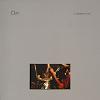 While Conference Live does not come near to representing the true live sound of Om (mainly due to the amplification limitations of any home stereo), it is a huge step up from the miserable-sounding Live at Jerusalem LP that emerged last year on Southern Lord. That recording’s muddy sound quality turned Al Cisneros’ and Chris Hakius’ thunderous roar into a tinny yawn. This time, the music is clearly defined and has buckets of body to it. Sound is not the only change, Emil Amos from Grails is now beating the skins instead of Hakius. It is a big change but Amos fills Hakius’ drum stool most capably.
While Conference Live does not come near to representing the true live sound of Om (mainly due to the amplification limitations of any home stereo), it is a huge step up from the miserable-sounding Live at Jerusalem LP that emerged last year on Southern Lord. That recording’s muddy sound quality turned Al Cisneros’ and Chris Hakius’ thunderous roar into a tinny yawn. This time, the music is clearly defined and has buckets of body to it. Sound is not the only change, Emil Amos from Grails is now beating the skins instead of Hakius. It is a big change but Amos fills Hakius’ drum stool most capably. Having missed out on the first release from Om’s new line (a 7” as part of a Sub Pop subscription series that sold out quicker than I can type this sentence), I was apprehensive as to how Amos would fit into Om considering his playing in Grails requires a completely different approach to drumming compared to drumming with Cisneros. Any fears I had dissipated within seconds of the album starting. Emil grooves along with Al’s distinctive bass with a natural fluidity that makes mockery of the fact that the duo have only been playing together for about a year. Starting with “Flight of the Eagle” (the track listing is reversed compared to the studio album), Cisneros and Amos go straight for the jugular. Emil has a more forceful and punchy style of playing, each hit sounding clear and tight compared to Hakius’ gentler touch. One thing that does bug me a little is that Al’s voice sounds a little burned out (but based on the clouds of smoke coming from his direction during a concert, this is no real surprise).
On the other side, “At Giza” sees the group quiet down as Cisneros goes into his more mantric style of singing. This song gives both Emil and Al room to play around with the arrangement than the relentless surge of “Flight of the Eagle.” Amos punctuates his steady beat with some tasteful fills, trading moments in the spotlight with Cisneros’ hypnotic bass playing. Here “At Giza” is more contemplative than previously documented, even the final few minutes where the overdriven bass kicks in lacks the fierce power than before. It took me a while to get used to this (that overdriven bass bit being my top Om moment) but it works well if not as mind blowing as I am used to.
Conference Live is a solid live album but at the end of the day, it does not come close to the original studio recording or indeed capture the body massaging power of the actual concert experience. However, it is a nice teaser for what to expect from Om’s forthcoming studio album God is Good. If a two piece band, especially one where the two members have worked together for so long, can undergo such a massive change in personnel and come out this strong on the old material then I high hopes for their future recordings.
This album is currently vinyl only so unfortunately no sound samples at this point in time, apologies!
Read More
- Administrator
- Albums and Singles
 Taking a moment out from Jackie O Motherfucker, Nick Bindeman’s schizophrenic assault on psychedelic pop has resulted in a filthy and ecstatic collection of songs that makes his usual band sound meek and girly by comparison. Throughout this limited edition cassette, Bindeman tries to merge as many different streams of rock and pop music together into one glorious, drugged mess.
Taking a moment out from Jackie O Motherfucker, Nick Bindeman’s schizophrenic assault on psychedelic pop has resulted in a filthy and ecstatic collection of songs that makes his usual band sound meek and girly by comparison. Throughout this limited edition cassette, Bindeman tries to merge as many different streams of rock and pop music together into one glorious, drugged mess.
In Between Dreams opens with “Set Me on Fire” which is as much indebted to The Mamas and the Papas as it is to Sonic Youth. Discordant guitars grind and pulse as Bindeman’s fog-drenched vocals echo through the noisy melodies. On “Venus in the Ape House,” Bindeman perverts the rhythm and mood from Die Haut’s “Stowaway” before it collapses in on itself like the more electric parts of The Velvet Underground’s White Light/White Heat. At this point, it sounds like Bindeman is all homage and has no tricks of his own but his work as Tunnels is as much about experimenting with his own playing as it is about using tried and tested techniques on the guitar.
The shorter side B sees Bindeman extend the range of his music further. Unusual percussion and the sound of celestial strings spar with a big, meaty fuzz guitar line on “Web.” It is here that he sounds at his most free, trying out ways of upsetting any notion of songcraft but without letting the music turn into a dirge or generic free improv. He launches himself out even further with “Hetty Witch,” forgoing the guitar altogether to make an eerie and ghostly abstract soundscape.
Overall, In Between Dreams is an exhilarating release that blends familiar rock ancestry into an unfamiliar context, making those tired old moves sound fresh again. Considering it is a cheap release due to the format, it is well worth hunting down (provided you still have a tape deck of course).
This album is currently on cassette only so unfortunately no sound samples at this point in time, apologies!
Read More
- Creaig Dunton
- Albums and Singles
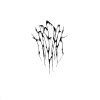 Following his brilliant stoner rock by way of minimalist compositions album The Invisible Mountain, Horseback’s Jenks Miller has delivered another release of carefully calculated minimalism in the old school vein, but here with a bit more of a noise and shoegaze sense.
Following his brilliant stoner rock by way of minimalist compositions album The Invisible Mountain, Horseback’s Jenks Miller has delivered another release of carefully calculated minimalism in the old school vein, but here with a bit more of a noise and shoegaze sense.
"MILH" throws out a raw guitar feedback squall over a simple, yet effective descending guitar melody. It is a similar structure to the full length, marrying the subtle melody with the harsher noisy stuff. Death metal type growl vocals do make an appearance, but in a subtle way that doesn’t clash with the Stoic structure. The dynamic vocals balance out the static melody well, and the entire track has a harsh noise edge to it.
"IHVH" gives the vocals a bit more of the spotlight, but shuns the melody for the sake of shimmering guitar noise and a monotone drum machine rhythm. It isn’t’ quite as calculatedly minimal, and has more of a dynamic, noise infused metal vibe to it.
Miller is definitively cultivating his own sound with Horseback, but it’s especially good to hear him trying variations of a theme. Not many folks would try and mix Charlemagne Palestine and Emperor, with just a smidge of My Bloody Valentine and Skullflower, but that’s what this single is doing.
Read More

